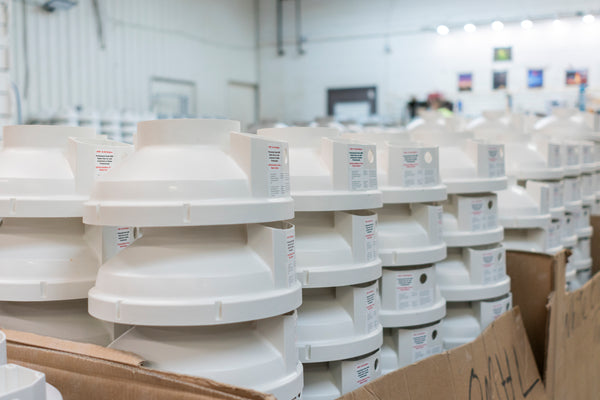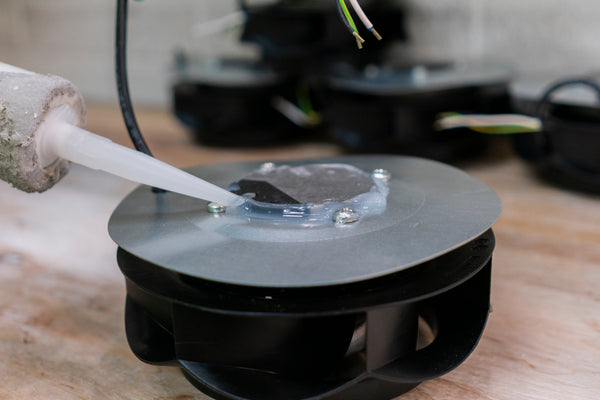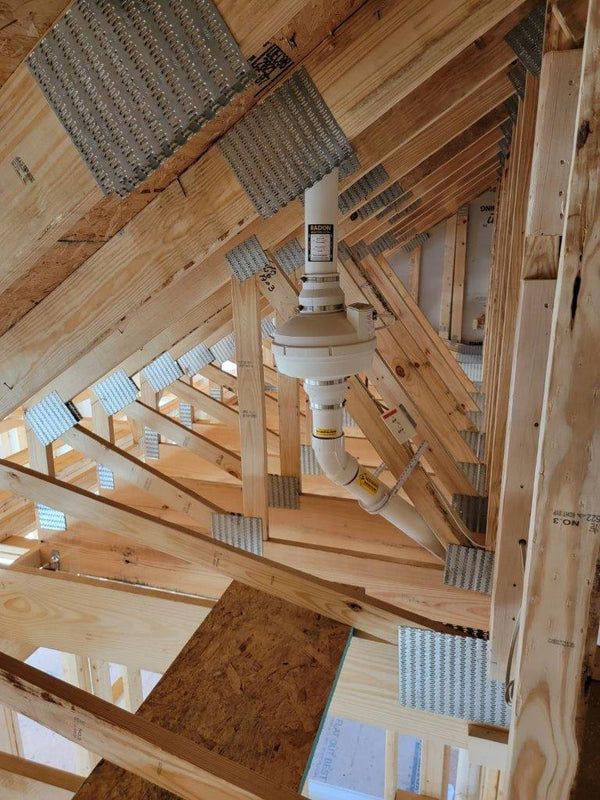
Where Does Radon Come From and How Does It Get in Your Home?
Radon is something many homeowners don’t think about, yet it has the potential to significantly impact your health. It’s a colorless, odorless gas that can seep into homes undetected. The longer it lingers, the more serious the health risks become.
Luckily, there’s a solution. In this guide, we’ll break down everything you need to know about radon, including where radon comes from and how it gets in your home. We’ll also explain the various methods for testing radon levels and strategies for reducing exposure.
What Is Radon?
Uranium is naturally found in trace amounts in soil, rocks, and water in all places on Earth. As uranium decays over time, it creates a natural byproduct known as radon gas. Though it’s a naturally occurring substance, radon becomes a health concern when it accumulates to high levels indoors, particularly in enclosed spaces such as basements and crawl space areas.
The health risks associated with radon come primarily from inhalation. When radon gas is released into the air inside your home, you breathe it in. Over time, prolonged exposure can lead to lung cancer.
The Most Common Sources of Radon in Homes
Here are the three most common sources of radon in your home.
Soil
The most concentrated source of radon that can impact your home is the soil beneath it. When uranium in the soil breaks down, radon gas is released and can move freely through tiny gaps and cracks. Because radon is heavier than air, it tends to accumulate near the ground, making basements particularly vulnerable.
Well Water
Another way radon enters living spaces is through water, particularly if you have a private well. If groundwater passes through uranium-rich rock, it can absorb radon which is then brought in through the plumbing system. Activities such as showering or washing dishes release radon from the water into the air, contributing to the indoor concentration. Unlike municipal water systems, private wells aren’t monitored regularly, meaning radon could go unnoticed unless you specifically test for it.
Building Materials
While it’s less common for building materials to be a significant source of radon, granite, marble, and brick can release very small amounts of the gas. These emissions are typically low and not considered a primary concern compared to soil or water. However, in combination with other sources, they can add to the total exposure in a home.

How Radon Gets in Your Home
Radon enters homes through a phenomenon called the stack effect. This happens when warm air in your house rises and escapes through the upper levels, which lowers the air pressure at the base of the home. This difference in air pressure creates suction, which pulls radon gas up from the ground and into living areas.
The nature of radon makes it especially tricky to manage. Being a gas, it moves invisibly through pathways into your home. These are the most common entry points:
- Cracks in the foundation
- Hollow block walls
- Dirt floors in basements
- Gaps around pipes and wiring
- Sump pump systems
While any home can have elevated radon levels, homes with unfinished basements or older construction tend to have more structural vulnerabilities that the gas can enter through.
Geographical Factors Affecting Radon Levels
Radon levels are not the same everywhere, and geography plays a significant role in the amount of radon found in any given area. The concentration of uranium in the soil varies by region, meaning some areas are naturally predisposed to higher levels.
For instance, parts of the Midwest and Appalachian regions in the United States are known hot spots for elevated radon levels. Homes built in these areas are more likely to require mitigation efforts to keep radon levels at bay.
Additionally, local building practices and foundation designs can influence radon levels. Homes built with crawl spaces or unfinished basements are often at higher risk because of increased air exchange with the soil.
The Importance of Testing Your Home for Radon
Given the risks associated with radon exposure, testing your home is essential. Testing allows you to determine whether your radon levels are within a safe range or if action is needed to mitigate the problem. Thankfully, testing is straightforward and accessible.
DIY radon test kits are widely available at hardware stores and online. DIY kits are especially handy because they provide results in days and are easy to use. Continuous radon monitors such as the EcoBlu and EcoQube are affordable options that offer constant readings. Professional testing services provide an even more detailed analysis.
The EPA considers radon levels of four picocuries per liter (pCi/L) or higher to be unsafe. If your test results fall within this range, it’s time to take corrective measures. At lower levels, it’s still recommended to address radon, but the urgency might be less immediate.

Radon Mitigation
Radon mitigation systems are designed to lower the concentration of radon in your home, ensuring safer living conditions. One of the most effective methods is sub-slab depressurization, where a pipe and a radon exhaust fan system are installed to vent radon gas from beneath the home to the outside. This system prevents radon from entering the living space and keeps levels well below the action threshold.
Other mitigation methods include sealing foundation cracks and improving ventilation in crawl spaces and basements. While sealing alone doesn’t eliminate radon, it can reduce the pathways through which gas enters your home.
Some homeowners also choose to install heat recovery ventilators (HRVs), which improve the airflow in the home while retaining the efficiency of indoor heating and cooling. These solutions not only help mitigate radon but also enhance overall air quality, making your home a healthier place.
Understanding where radon comes from and how it gets in your home is essential knowledge for any homeowner. Whether it originates from the soil beneath your foundation, your well water, or your building materials, being aware of its pathways can help you take the necessary precautions. Testing, mitigation, and regular monitoring are key steps in reducing exposure and protecting your family’s health.





